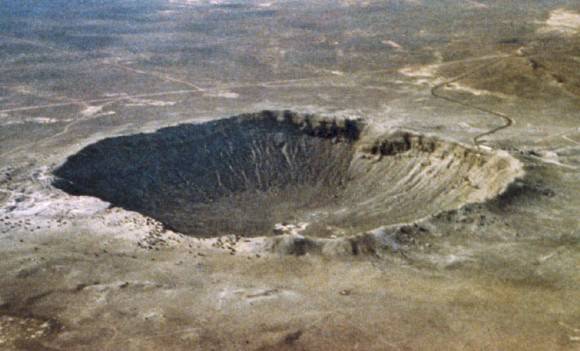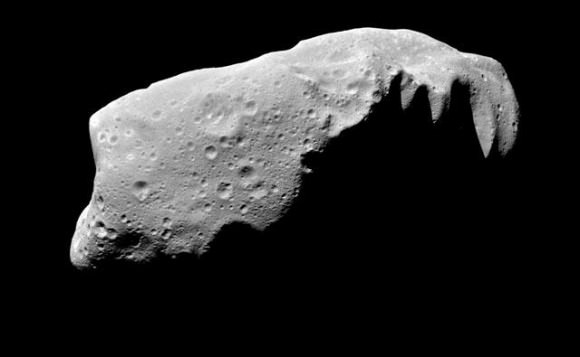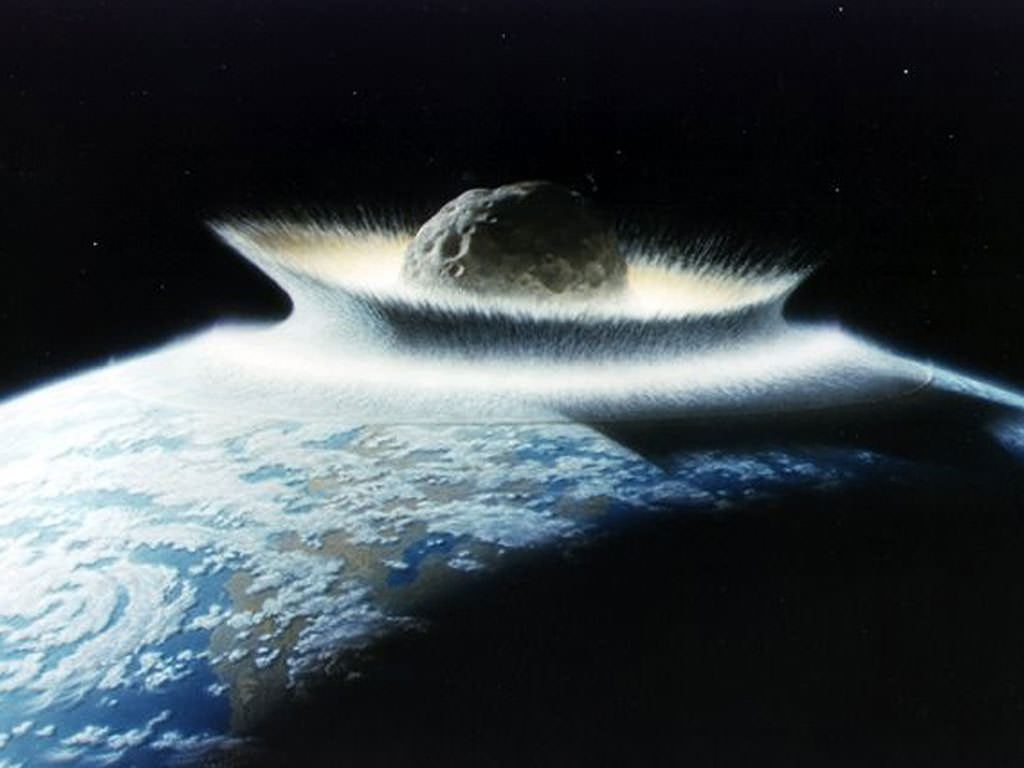[/caption]
Scientists aren’t entirely sure when the last major asteroid hit the Earth, but it’s certain to happen again. Alan Harris, asteroid researcher at the German Aerospace Center (Deutsches Zentrum für Luft- und Raumfahrt; DLR), is hoping to head the next one off. Last month, Harris established an international collaboration of 13 researchers to investigate methods of shielding the Earth from near Earth objects (NEOs). The project is, appropriately, called NEOShield.
Asteroids approaching the planet typically travel between 5 and 30 kilometres (about 5 to 19 miles) per second. As that speed, a moderate sized body can have major consequences. The Barringer Crater in Arizona, often referred to as Meteor Crater, is a 1,200 metre crater (about 3,950 feet or 0.7 miles) that scientists hypothesize was caused by a 50 metre (164 feet) meteor.
The bad news is that there are thousands of known NEOs just like the one that made Meteor Crater, leading experts to posit that a dangerous collision could occur as often as every two hundred years.

The good news is that it’s possible to stop an asteroid hitting the Earth. You just have to be in the right place at the right time to give the object the right push in another direction.
Scientists are focusing on possible methods of redirecting threatening asteroids so they miss the Earth. “In order to modify their orbit and prevent a collision with Earth, a force must be exerted on them,” explains Alan Harris. “And at the precise time, as well.” One way to do this is to have a spacecraft impact a threatening asteroid, imparting enough force to change its orbit. “In my opinion, this is a very practical method,” said Harris. But there are still questions to answer, like how to guide the spacecraft to a moving target at the right angle for the right impact and how to minimize the effects of fuel movement on the spacecraft’s path.
Another way is to use the spacecraft’s gravitational pull to nudge the asteroid into a different orbit. If the object is far enough away, a tiny tug could have a big effect. But so far, “this method only exists on paper,” said Harris, “but it could work.”

Another third, less appealing prospect, is to use explosive power to break up an Earth-bound asteroid. But this could be disastrous, creating a shower of debris instead of one solid piece. As such, Harris considers this method a last resort. “If a very large, dangerous object with a diameter of one kilometre [0.6 miles] or more is discovered,” explains Harris, changing its orbit won’t be a option. “The greatest force we would be able to use to divert the asteroid from its path would be a nuclear explosion. This technique is regarded as a very controversial.”
Over the next three years, during which the European Union will support the project with four million Euros and international partners will contribute an additional 1.8 million Euros, the NEOShield project will research these defence methods. The scientists will focus on data from asteroid observations and lab experiments to generate computer simulations, ultimately determining how best to protect the Earth from future devastating impacts.
Source: DLR News Portal


“Asteroids approaching the planet typically travel between 5 and 30 kilometres (about 5 to 19 miles) per hour.” I think you mean kilometres (miles) per second.
per second, yes!
“Asteroids approaching the planet typically travel between 5 and 30 kilometres (about 5 to 19 miles) per hour. ”
That had me chuckling for quite a while! I think we’d be better off if they did 😉
This topic has been discussed to death in documentaries and other forums. The idea of impacting or blowing up an asteroid has been determined to be very impractical due to the chance the the composition of the asteroid may not simply be “rock”. Various forms of asteroid exist, as we have seen, including Rubble Pile asteroids. If you want to do an experiment, think of these potential NEOs as a big mound of sand. Take a ball of decent mass and drop it from a height into it. The resulting effect isn’t that the mound of sand is dispersed into millions of harmless grains that would (on a comparably larger scale) just burn up in the atmosphere; instead, the kinetic energy of the impact is dispersed, resulting in a dent, but not destruction. If the gravity of the main body is sufficient, and the distance great enough, there’s even a fair chance that any rocks/debris blown off by an explosion would simply be drawn back in gradually, and the asteroid would reform. There’s also the possibility that the NEO may be composed of a disproportionate amount of metal. Again, this would result in a severely diminished effect were we to rely on an impacting spacecraft or warhead detonating in order to change the path of the object. Realistically, the only “practical” – and I say that realizing that the technology does not yet exist, but is relatively easy to conceptualize and hopefully build – is to either a) try a gravity tractor, as suggested in the article, or b) land a craft with exceptionally powerful thrusters or engines on board that could fire for long durations in order to change the asteroid’s trajectory. The problem with both these suggestions is that they would require us to detect the object quite literally years in advance, have the technology ready, and be able to deploy whatever that tech might be (factoring in travel time) with enough time for it to have an effect. Although it’s a grim outlook, I’m afraid that the chances of us being able to successfully circumvent a large asteroid impact a la “Armageddon” are quite small, and still in the realm of science fiction. Let’s hope this team at NEOShield has some new ideas.
Take away the micro-gravity well to reduce the threat. AGW sucks debris from outer space.
With the recent searches for dangerous near earth asteroids underway, have we not discovered the great majority of the larger ones that would cause extensive damage regardless of where they hit? I think 500 meters and larger was the cut off if I remember correctly.
We should first characterize asteroids further. An asteroid with a dust surface, indeed what serves as the matrix for holding hard rocky masses together, should be comparatively easy to move. A spacecraft consisting of mirrors with a small ion motor will work. The mirrors direct solar radiation to the surface. The UV radiation ionizes the dust which leaves the asteroid with some velocity. Newton’s third law then tells us there will be a momentum imparted to the asteroid. Keep this up long enough and you can change the ephemeris of the asteroid. In effect we would be using one ion rocket to direct solar radiation to generates a much larger ion rocket.
LC
It is so scared that an asteroid will hit the earth because it will totally affect us.
Facts About Earth
It is so scared that an asteroid will hit the earth because it will totally affect us.
Facts About Earth